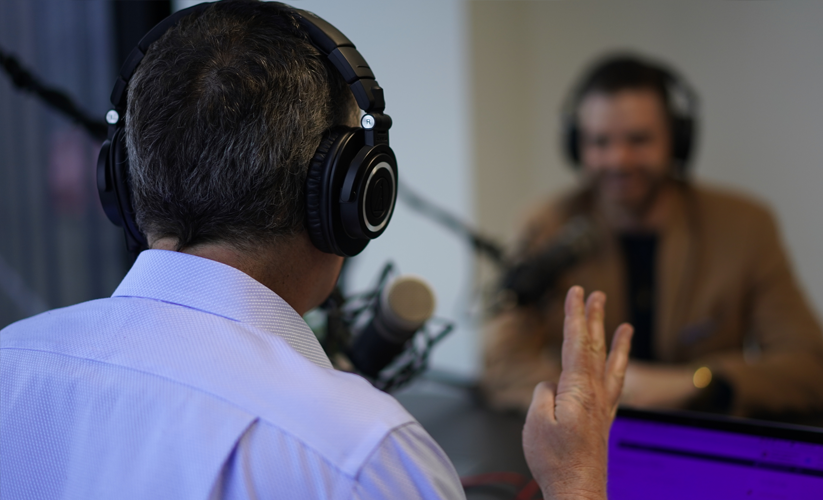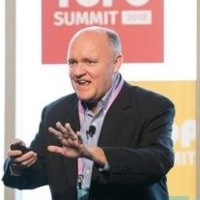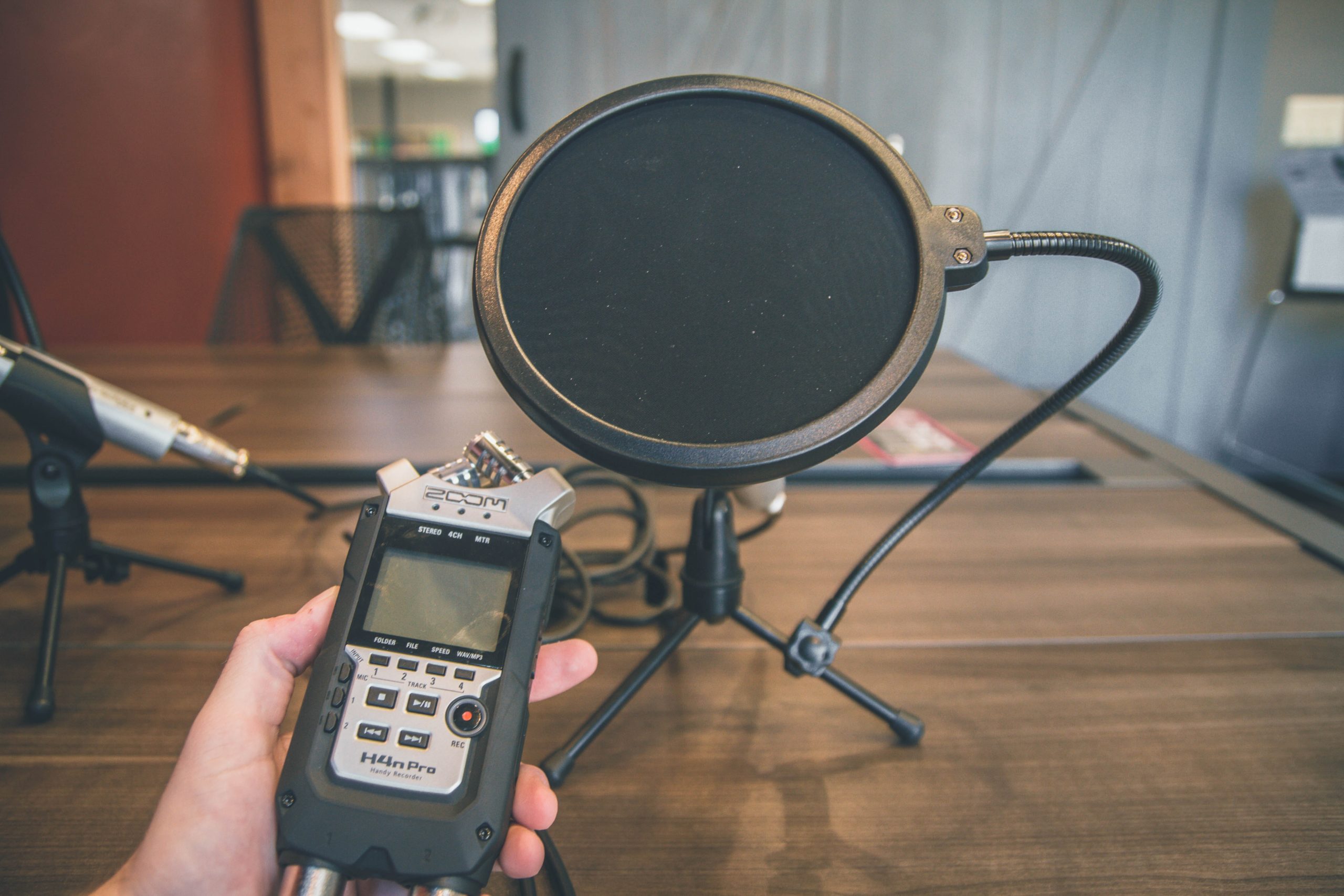Shawnna Sumaoang: Hi, and welcome to the Sales Enablement PRO podcast. I am Shawnna Sumaoang. Sales enablement is a constantly evolving space, and we’re here to help professionals stay up to date on the latest trends and best practices so they can be more effective in their jobs.
Today, I’m excited to have Robert Koehler join us from Compass. Robert, I’d love for you to just introduce yourself, your role, and your organization.
Robert Koehler: Thank you, Shawnna. A bit about myself – first, I have over 20 years of sales experience having worked in the financial publishing and high-tech industries all the way from a three-person startup to being employee number seven to big companies such as HP and IBM, and SaaS companies such as LinkedIn. I’ve delivered sales performance improvement programs in over 20 countries. I think the most challenging program I ever delivered included a sales training done with simultaneous translation in Seoul, South Korea to a hundred sales account managers.
Today, I’m currently the director of sales effectiveness of Compass, which is a high-tech real estate company and one of the highest growth companies in the market today with over 15,000 agents. Our mission in sales effectiveness is to accelerate and increase revenue and profitability. And the last thing I’ll note, Shawnna, is that our chief revenue officer gave me the option on what I wanted to call the team. And I intentionally chose sales effectiveness over sales enablement because I believe that we’re in the results business. And the literal definition of effectiveness is the degree to which something is successful in producing a desired result. I wanted our team to be focused on achieving the results and the metrics that our CRO and our VP of sales care about.
SS: Well, I love that background context and I think that makes a ton of sense, Robert. Thank you for that introduction. You also actually recently participated in our Sales Enablement Soirée event in San Francisco. At that event, you had mentioned that you think of training as a long-term program rather than a one-time event. Why is that approach important for you?
RK: Thank you for the question, Shawnna. I really enjoyed the Soirée. That approach is important to me. In light of a lot of research that we’ve probably all seen, even though the stats may be a little bit different, it’s the concept that adults forget 90% of what they learn within one week. And the reality is that any behavior change usually takes at least three weeks of consistent effort. If you’ve been trying to change the way you eat, exercise, any of those things, it takes repetition and reinforcement. And so one-time training programs, for instance, in the realm of sales enablement, typically don’t get a lot of payback.
It’s analogous to running a marathon. I’ve run a couple of marathons in my life and you practice and train for three or four months and you continually do six-mile runs, long runs on the weekend. To get that long-term performance that you need, you need long-term repetition.
An example in the sales space, they’ll give you a sales kickoff meeting. How many times have we been to sales kickoff meetings, had a big pronouncement or campaign, and it was never followed up upon or reinforced throughout the year? The euphoria and the momentum from the sales kickoff didn’t last more than a week or so.
Another reason why I think it’s really important that you take a long-term approach is that it gets more people involved in sustaining the program. The research that I’ve read shows that the most important success factor in sales performance improvement, is frontline sales manager involvement during and after a training event. And if you only have a one-time event, you don’t get that reinforcement from the frontline sales managers who were really a key lever in providing lasting behavior change in sales organizations.
SS: They absolutely are. On that note, since you brought up frontline sales managers, how do you utilize coaching to reinforce training and in your opinion, what is sales enablement role in coaching?
RK: There are a couple of ways that we utilize coaching to reinforce training at Compass and that I have in my career, and I’ll mention those first, then pivot to my perspective on sales enablement’s role in coaching.
The first thing that we do today at Compass is we use sales enablement technology to coach sellers on specific components of a call. It may be the opening, delivering the opening agenda. It may be a three-minute video on messaging and positioning a specific program or two. It allows us to get down to a very small micro-bite of learning and practice, and then sales effectiveness and their frontline sales managers, as well as their peers, can comment and evaluate that video. And then we also rate it so that the end of the day, if we’ve had 50 sellers go through and do it, we can pick out the best one or two and use that as a great example for other sellers and future new hires that come through the program.
The second way that we use coaching reinforced training is through call shadowing. We have coaches on our sales effectiveness team, myself included, that go out into the field, do call shadowing, and use that as another mechanism to reinforce training.
The third is practice. we will set up a lot of practice sessions, a lot of them virtual because we’re very spread out as a company and we give them a chance to practice and get that peer and coaching feedback live and in real-time.
And then what we’ll also do when we, as part of a longer-term program, if we run those practice sessions, is we’ll come back and do a group debrief. So, for instance, I might train the sellers in our Atlanta market. Then I’ll have them do one-to-one practice sessions, and then a week or two later, we’ll all gather for group debrief to take away the key highlights of what they should continue doing and what as a group they should consider start doing or stop doing.
Shawnna, the other thing you asked me to address was the role of sales effectiveness in coaching. I have a couple of quick thoughts there. First is that I believe it’s the role of sales effectiveness and coaching to collaboratively set expectations for frontline sales manager coaching, along with sales leadership. Sales leadership ultimately needs to share that with the frontline sales manager. Sales effectiveness’ role, at least at Compass, is working with sales leadership to set those expectations.
Second, the role of sales effectiveness and coaching is giving frontline sales managers the tools for coaching. A lot of times in a lot of organizations, the frontline sales managers are top performers who’ve been promoted to that position. In our case, we give them tools on who to coach, when to coach, how to coach, including what to look for, and stage-by-stage valuation scorecards or sales meetings, scorecards, and evaluation templates because they haven’t done this before. They don’t know what to look for. They’re not necessarily tuned into who to coach, when to coach in a coaching methodology.
It’s a fine line in the end run and that we in sales effectiveness want to contribute and model good coaching for sales managers. And yet if sales effectiveness does all the coaching, I find that those organizations end up enabling the sales managers not to coach. So, you want to model for them. Give them the tools and then also give them plenty of opportunities to take ownership over coaching of their individual teams.
SS: I think that is a really phenomenal approach to coaching and very well thought through how enablement plays a role there. Now I want to talk a little bit about training and coaching and how that helps, from your perspective, to lead to better behavior change – but also how you measure behavior change. I think that that’s been a really hot topic these days because I know sales enablement plays a fundamental role in shifting the behavior of a sales organization. So what, from your perspective and your experience, are some best practices in measuring that?
RK: Yes. It always comes down to measurement and thinking of success metrics in your initial plan, before you even develop and deliver whatever performance solution you’re going to develop.
The first one, Shawnna, is very qualitative and very fluffy. I use it as a personal sort of rule of thumb, and that’s, does the program, just the language and terminology from the program, does that become part of the sales team and organization standard vocabulary? We have a couple of things today at Compass a year from when we first started the sales effective program, like the value first proposal. Those are words that didn’t exist a year ago. And now whatever market I go to or whatever seller I work with, I’ll hear them refer to those things in terms of something that’s more quantitative.
Certainly look at indirect indicators. And my recommendation is that everybody at a high-level set baseline metrics on current results that the VP of sales or chief revenue officer cares about. At Compass, those include sales stage, conversion rates, win rates, average sales cycle velocity. We may not have direct eye control over all of those and there may be loose correlation to that. Even that loose correlation is valuable. And I’ll give you a specific example. One of the things that we helped create along with the VP of sales this year and implement was a top deal review program.
And when we did the measurement, we found that there was over a 10% growth compared to other accounts and conversion rates for those accounts where we ran top deal reviews. Is that all attributable to sales effectiveness? No. And yet that data is still compelling that this is a program that’s adding value that we should continue doing.
Another example is that we rolled out a discovery program along with a value-first proposal program. And in the two months that we did that, comparing April to the end of June, we saw a 13% increase in win rates during that time period. Is that directly attributable solely to sales effectiveness? I doubt it. However, by tying to those core metrics that sales executives care about, it was very compelling on both programs and we decided to continue them.
The third thing that we’ll measure, sometimes it’s just as simple as is it being done. For instance, when we did the value first proposal program. We started asking reps to put a copy of that, and when they submitted their deal, the deal desk, and we could start to determine how many deals are they actually developing a value first proposal. Well, we went from zero sellers doing it to 78% of the sales team doing it, which was about 80 reps, in a one month time period. Does that mean that we automatically impacted sales results? We just start with the premise that if they’re doing it, we’re moving the needle and then we’ll continue to focus on our long-term program at increasing the quality.
Some other ideas as we look under the tip of the iceberg, we’ve had success doing before and after shadowing evaluations along with certification scores. So, we evaluate sellers or certify, do a certification where we give them a score, we run the program, and then we’d come back and repeat the same exercise and just look if they’ve improved on the evaluation or certification scores.
Last thing, Shawnna, that I’ll mention in terms of measurement is I’ll call out onboarding specifically because I know this program comes up quite a lot and that’s measuring time to blank. In our case, we measure time to second deal, time to first full quarter of quota achievement, time to two consecutive quarters of quota achievement, time to three times pipeline build.
SS: Well, I love to hear those as examples. I can’t tell you how many times I’ve heard time to first deal and have had to talk about how that is probably not a great indicator as to whether or not what happened in your onboarding stuck. So, I’m glad. Those are some great metrics, especially with regard to the onboarding program specifically.
RK: Yes. Shawnna, one of the things that we found, is we went in with a hypothesis. We measured all those things for the first half of 2019 and we went in with the hypothesis that the most important metric to measure was the time to second deal with the idea that it eliminates any bluebirds or deals that just fell into people’s laps.
When we got the results in the second half of 2019, we found out that the hypothesis was wrong. Our five sellers that had hit every single ramp and full quota target in 2019, the thing that distinguished them significantly was that in the first month, they had three times the pipeline build of other account executives. And that may be a “duh” moment. However, it helped us then adjust the onboarding program to really focus out of the gates on pipeline build and prospecting.
SS: Well, thank you, Robert. I really do truly appreciate you sharing your own best practices for our sales enablement audience. Thank you so much for joining us today.
RK: Thank you, Shawnna.
SS: To our audience. Thank you for listening. For more insights, tips, and expertise from sales enablement leaders, visit salesenablement.pro. If there’s something you’d like to share or a topic you’d like to learn more about, please let us know. We’d love to hear from you.







